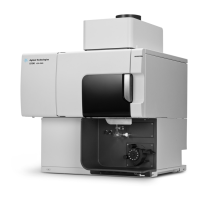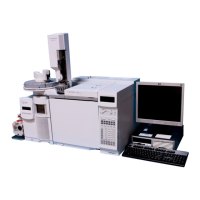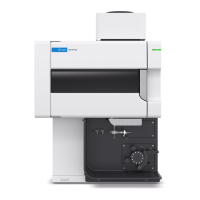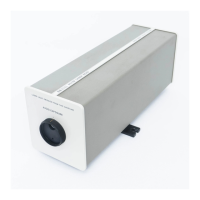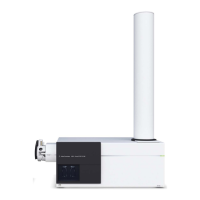36 Agilent Restricted Agilent 5110/5100 ICP-OES Service Manual
3 General Information
Mains Power Module (MPM) Self Check
Mains Power Module (MPM) Self Check
Following is a detailed step by step description of the Mains Power Module start up and
shutdown sequence.
Initial
This is the initial step of the MPM start-up sequence and is performed when power is first
connected to the instrument. In this step, all instrument control relays and output channels are
disabled. The MPM will remain in this step for five seconds before progressing through further
start-up steps. This 5 seconds is to allow a user to see the 2Hz error flashing state before the
power supply tries another initialization.
During this step of the start-up sequence, the LED may be flashed either slowly (approximately 1
Hz), indicating normal instrument start-up when power is first connected to the instrument, or
rapidly (approximately 2Hz), if the MPM start-up sequence has been reset as a result of
sequence error.
Stable
In this step of the MPM start-up sequence, the MPM will await the stabilisation of the mains AC
input as determined by the locking of the MPM phase control driver (zero crossing detector
working in time frames expected) on this alternating input signal. If this stabilisation (and phase
lock) does not occur within 1000 ms, the MPM sequence will be reset.
Off
In this step of the MPM start-up sequence, all instrument control relays and output channels are
disabled and the instrument is considered to be “off”. It is only following the switching “on” of the
soft-power switch that the MPM will continue the instrument start-up sequence.
During this step of the MPM start-up sequence, the MPM will continuously measure for the +24
V supply provided by the module. This measurement is performed to test for fusing of the mains
instrument relay which would result in this measure being continuously high, irrespective of
relay state. If this condition is detected, the MPM will report an error and reset the start-up
sequence.
If mains power to the +24V relay is stuck on, sequence will continue.
If a soft power off is attempted, Instrument will stay powered up (every module will still have
+24V), but the P500 processor will be told it is shutting down meaning a user cannot connect to
instrument. From here the MPM will be stuck in a reset loop because it keeps detecting the
+24V is on when it should not be, and restarts the power on check.
Instrument Relay
In this step of the MPM start-up sequence, the instrument relay (for +24V and blower and heater
pads) is enabled (but triacs are kept off) and instrument current measurements (for blower and
heater pads only) are monitored for indication of either short circuit (> 1 A, instantaneous
measure) or excessive leakage current (200 mA, measured at end of step timeout period). If
neither of these error conditions are detected within 500 ms, the MPM start-up sequence is
continued.
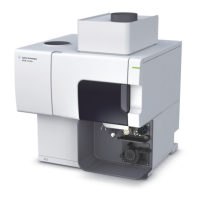
